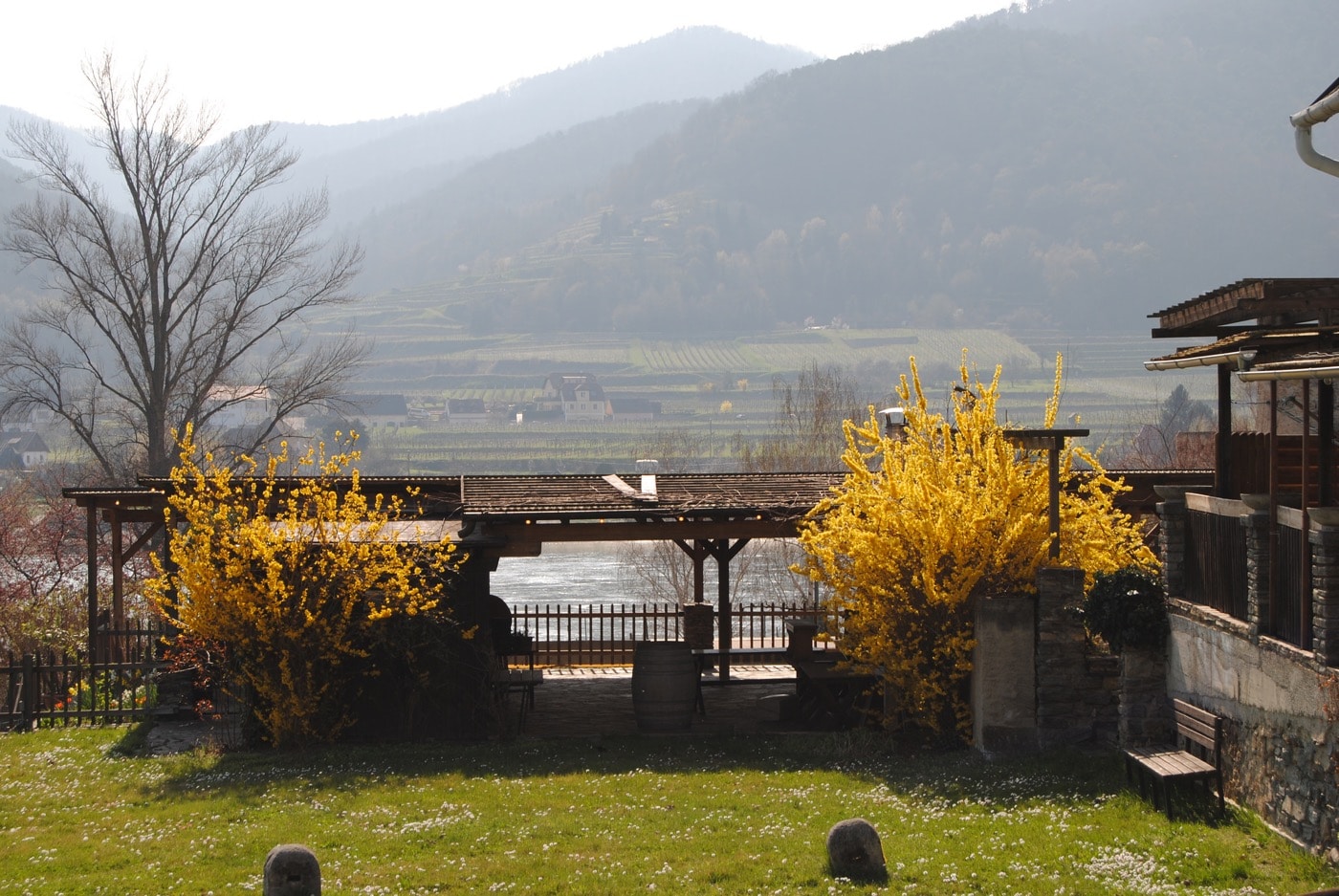Standing on the terrace of the Stift Goettweig monastery complex, you see the entire Wachau Valley unfolding beneath you. The Danube River wends its way through the valley where lush forests and vibrant fields lead to the river’s edge with the prized wine producing hills beyond.
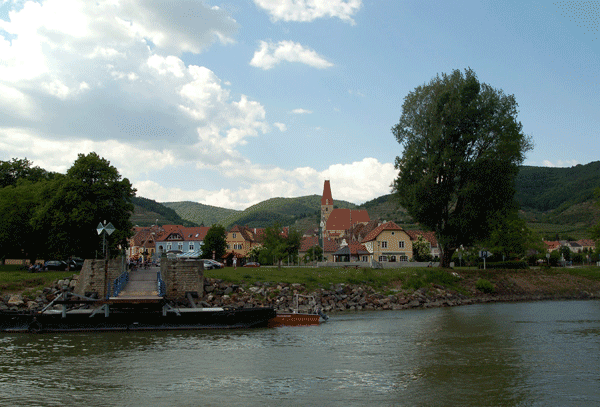 Just an hour’s drive from Vienna, Wachau is a bucolic valley dotted with tiny towns far removed from the bustle of the modern world. Cyclists zip along the river and ferries ply their way from Krems to Melk, with its famous abbey and library perched high atop a rocky outcropping. Here, in a condensed area around the towns of Spitz and Durnstein, you will find some of Austria’s premier vineyards.
Just an hour’s drive from Vienna, Wachau is a bucolic valley dotted with tiny towns far removed from the bustle of the modern world. Cyclists zip along the river and ferries ply their way from Krems to Melk, with its famous abbey and library perched high atop a rocky outcropping. Here, in a condensed area around the towns of Spitz and Durnstein, you will find some of Austria’s premier vineyards.
One thing worth a mention about visiting Wachau. For starters, the region is known for its mineral-driven white wines so if you’re a fan of big reds, you’ll be out of luck. When tasting a Grüner Veltliner for example, high up there on the mineral scale, I sometimes feel like I’ve licked a stone. While it can take some getting used to, this is the terroir of Wachau in a nutshell. The hills above the valley floor are home to the best vines, with a base of granite and schist imparting the region’s signature minerality. And since the climate is on the cool side, the wines will often be more acidic which works hand in hand with minerality to create highly-structured balanced wines.
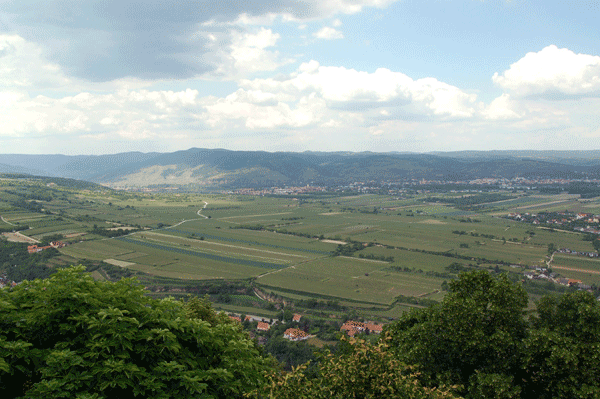
Austria’s signature wine grape, Grüner Veltliner, is much evident in Wachau, along with Riesling, Weissburgunder (Pinot Blanc), Sauvignon Blanc, Muskateller and lesser known varietals Welschriesling and Neuberger. Since the Austrian wine market is dominated by small producers, many still harvesting by hand, the wines are of high quality and generally made in limited quantities, pushing up prices relative to other wine producing countries.
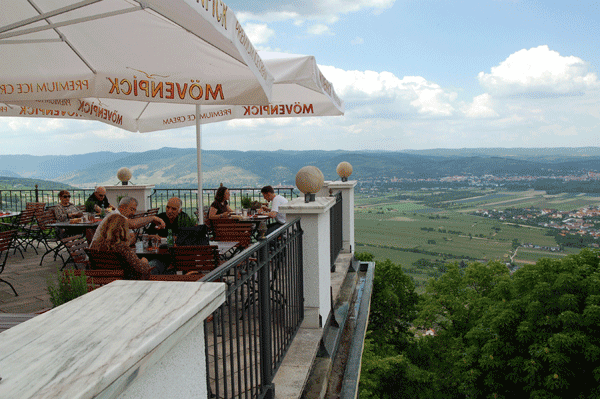
Another thing to consider is the classification system. Wines are classified in three categories: Steinfeder (light), Federspiel (medium-bodied) and Smaragd (powerful). Both Grüner Veltliner and Riesling show particularly well at the Smaragd level, with these wines ideal candidates for aging. In spite of this potential, most Austrians drink their wines disturbingly young, preferring freshness rather than savoring what age can do. Part of this comes from the heuriger (wine tavern) tradition of drinking young, fresh wines and part of it is, well, frankly head-scratching. Austrian wine is exactly the type of wine that needs a few years in the bottle – at minimum, however, wines typically bottled in the spring can be tasted in the fall. At tasting rooms, you’ll be offered the current release but if you ask for an older vintage, they might pull out a bottle or two. Oddly, they enjoy doing this because they’re curious about how their wines age and appreciate when interest is expressed in the aging process. And since they continue drinking almost exclusively younger wines, there’s more of the good stuff for us.
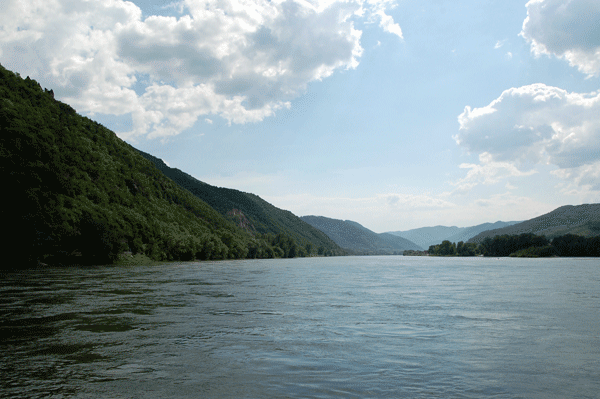
[alert type=white]
The country code for Austria is +43
Top Winemakers
Nikolaihof has been practicing biodynamics long before it became a trend and the results have made the Saahs one of the most respected winemaking families in all Austria. The best place to enjoy their wines is at their Weinstube, especially in the warm months when you can sit in the courtyard. Look for the full-bodied Grüner Veltiner Smaragd 2010 from Weingebirge, the bone dry Elisabeth Tradition (a blend of Riesling, Weissburgunder, Grüner and Neuberger) and Rieslings from the prized Steiner Hund plot. Nikolaigasse 77, Mautern an der Donau, www.nikolaihof.at/de/weinstube
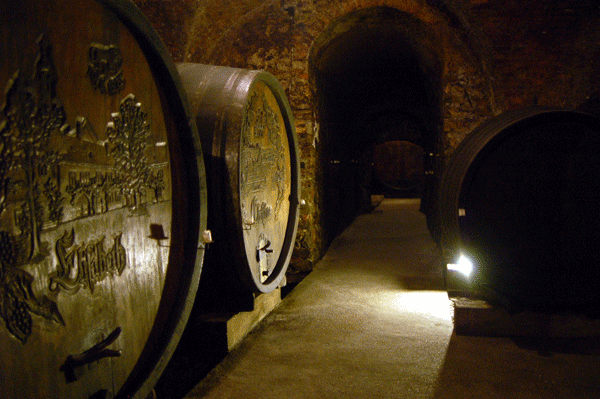
Though Rudi Pichler is not open to the public, you should seek out his wines, which are pure in style with no residual sugar. The two best sites for his Grüners are Kollmutz and Achleiten, the latter considered one of the best vineyards in Austria, known to impart tremendous minerality to its wines. For Riesling, search out wines from Hochrain, Steinriegl and Achleiten, which are listed on the label. He calls 2010 “the best vintage of the last decade” so grab those if you see them.
The domain of Ilse and Toni Bodenstein, Prager, sits on the main route on the north bank of the Danube in Weissenkirchen. The grapes are grown at 13 different sites, most on the steeply terraced hills above town, including Achleiten and Steinreigl. Riesling makes up 60% of the production, with highlights including the minerally masculine Kaiserberg, the more accessible Achleiten and the strongly mineral Klaus. The complex, aromatic Stockckultur Achleiten Grüner Veltiner Smaragd is also a terrific wine. Visits are by appointment: prager@weissenkirchen.at , Wachaustrasse 48, Weissenkirchen, www.weingutprager.at/
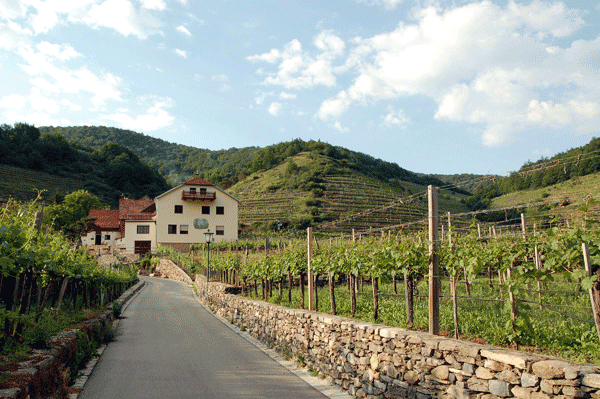
While there are several Donabaums making wine in the area, I’m partial to the work of Johann Donabaum. The winery sits on the road heading out of Spitz along a creek and if the cellar door is open, drop in to taste some wines. The value-quality ratio is high here, from the accessible Federspiels to the minerally Grüner Smaragds from Kirchweg and Spitzer Point. The Riesling from Offenberg is the whole package, a perfect balance of acidity and minerality with layers of fruit. Seek out the Limited Edition line made only in the best years and Rieslings from 2007. Laaben 15, Spitz, www.weingut-donabaum.at/index.php?sprache=2
F.X. Pichler is the area’s heavyweight winemaker who, in 2009, opened a spectacular new cellar at the base of a cliff. FX’s grapes are roughly split between Grüner Veltliner and Riesling growing in and around Loiben and Durnstein. Seek out the “M” line of Grüner Veltliner Smaragds, F.X.’s top level wine, or any from the prized Loibenberg vineyard. Tastings by appointment – email weingut@fx-pichler.at or call +43 (0) 2732/85375, Oberloiben 57, Durnstein.
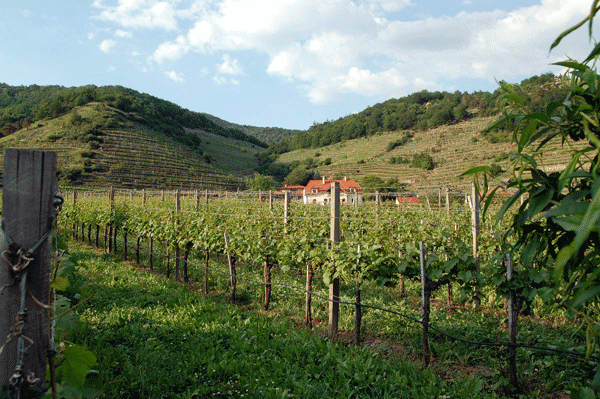
Pichler-Krutzler is a name to watch out for, a product of a marriage between Elisabeth Pichler, the daughter of Franz Xavier (F.X.) Pichler, and Erich Krutzler, a winemaker from Burgenland. This young domain only started in 2007 and is not open yet to the public. Most of the production is Grüner Veltliners, such as the Supperin and the Wunderburg. The Riesling “In Der Wand” showcases both the grape and its gneiss terroir beautifully. Erich hasn’t left his Burgenland roots behind either – making a 2009 Blaufrankisch from Sudburgenland alongside the whites.
Where to Buy Wines in Wachau:
Domäne Wachau has the largest variety of wines from area vinyards and offers tastings of its own wines, Durnstein 107, www.domaene-wachau.at
Weinhandlung Noitz stocks wines from Austria, as well as other European wine regions, Undstrasse 6, Krems-Stein, www.wein-handlung.at
Vinothek Fohringer in Spitz focuses on Austrian wines, especially from Wachau, www.fohringer.at
Where to Stay:
Gästehaus Prankl – With rooms overlooking the Danube, this small hotel is cozy and welcoming. Grab a seat on the deck for a delicious dinner of local specialties and watch the sparse river traffic floating by. Hinterhaus 16, Spitz, +43 2713-2323, www.gasthaus-prankl.at/
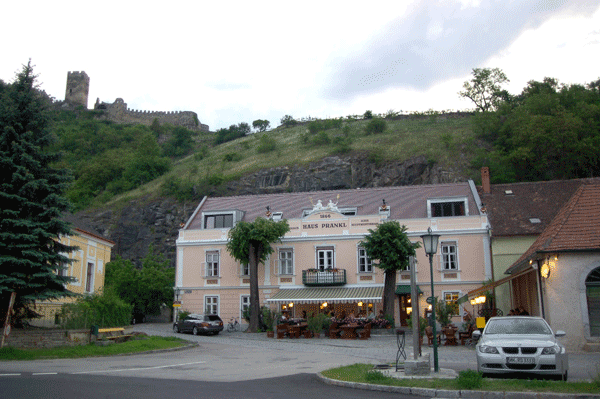
Ad Vineas Gästehaus – Owned by the same family as the Nikolaihof winery, this newly built nineteen room guest house features organic breakfast, free internet and an outdoor swimming pool. Kainzstrasse 14, Mautern, +43 676-433-1828, www.nikolaihof.at/de/gaestehaus
Weinhaus & Gästehaus Rosenberger – This modern guest house just east of Wachau has four rooms plus an apartment, each dedicated to a different grape variety. Every room has a balcony, perfect for enjoying a bottle of local wine as you watch the sun set over the terraced hills. Leisergasse 29, Rohrendorf bei Krems, +43 2732-83843, www.rosenbergerwein.at/
Where to Eat & Drink:
Stift Goettweig – Dine on the terrace in the warm months with a stunning view of the Danube River valley. The monastery’s wines are very good and pair well with the Austrian dishes such as white asparagus and schnitzel. www.stiftgoettweig.at
Loibnerhof – Run by the Knoll winemaking family, Loibnerhof serves traditional wine tavern food that complements their wines. Wine by the glass selections are extensive and even feature some of those elusive older vintages. The restaurant has a lovely garden, perfect for summer dining. Unterloiben 7, Durnstein, +43 2732 828 900, www.loibnerhof.at/
Weinstube Nikolaihof – This wine tavern serves a rustic, mostly organic menu that pairs perfectly with the owners’ biodynamic wines. In warm weather, grab a table under an enormous hundred year old tree planted on the occasion of the Emperor’s anniversary in 1908. Open from late April – mid November. Nikolaigasse 77, Mautern an der Donau, +43 2732 82901, www.nikolaihof.at/de/weinstube
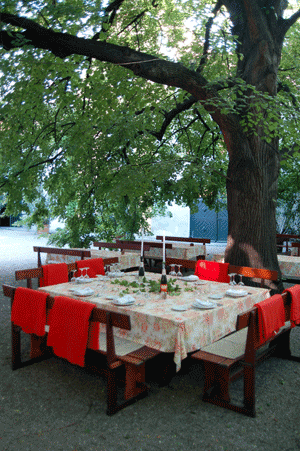
Wein-gut Hutter – Owned by Martin Nigl, a highly respected winemaker in the neighboring region of Kremstal, this hotel/restaurant opened early in 2012. The menu features rustic and traditional dishes with modern preparations; the innards (when available) are not to be missed. The wine list features both Nigl wines and selections from his new label from Krems called Wein-gut Hutter – weingut means “winery” and this usage is a play on words including the literal translation “good wine”. Weinzierlbergstrasse 10, Krems, +43 2732 82 006, www.weinguthutter.at
Driving Tip
Area roads are well marked but keep in mind only a few bridges span the river connecting the main wine towns with the sparsely populated south bank. If you miss those in Krems, Mautern or Melk, or if your GPS sends you along the river without mentioning the need to cross, have no fear as the St. Lorenz/ Weisskirchen car ferry is a charming way to traverse the Danube.
[/alert]

